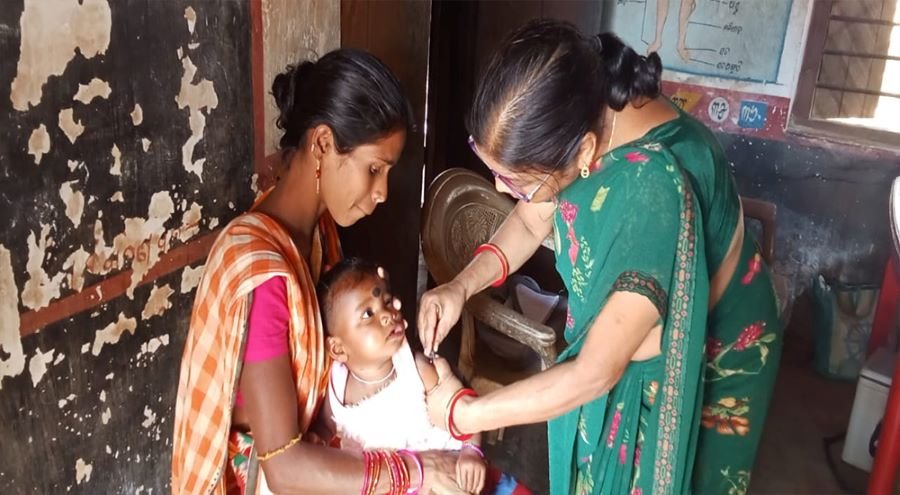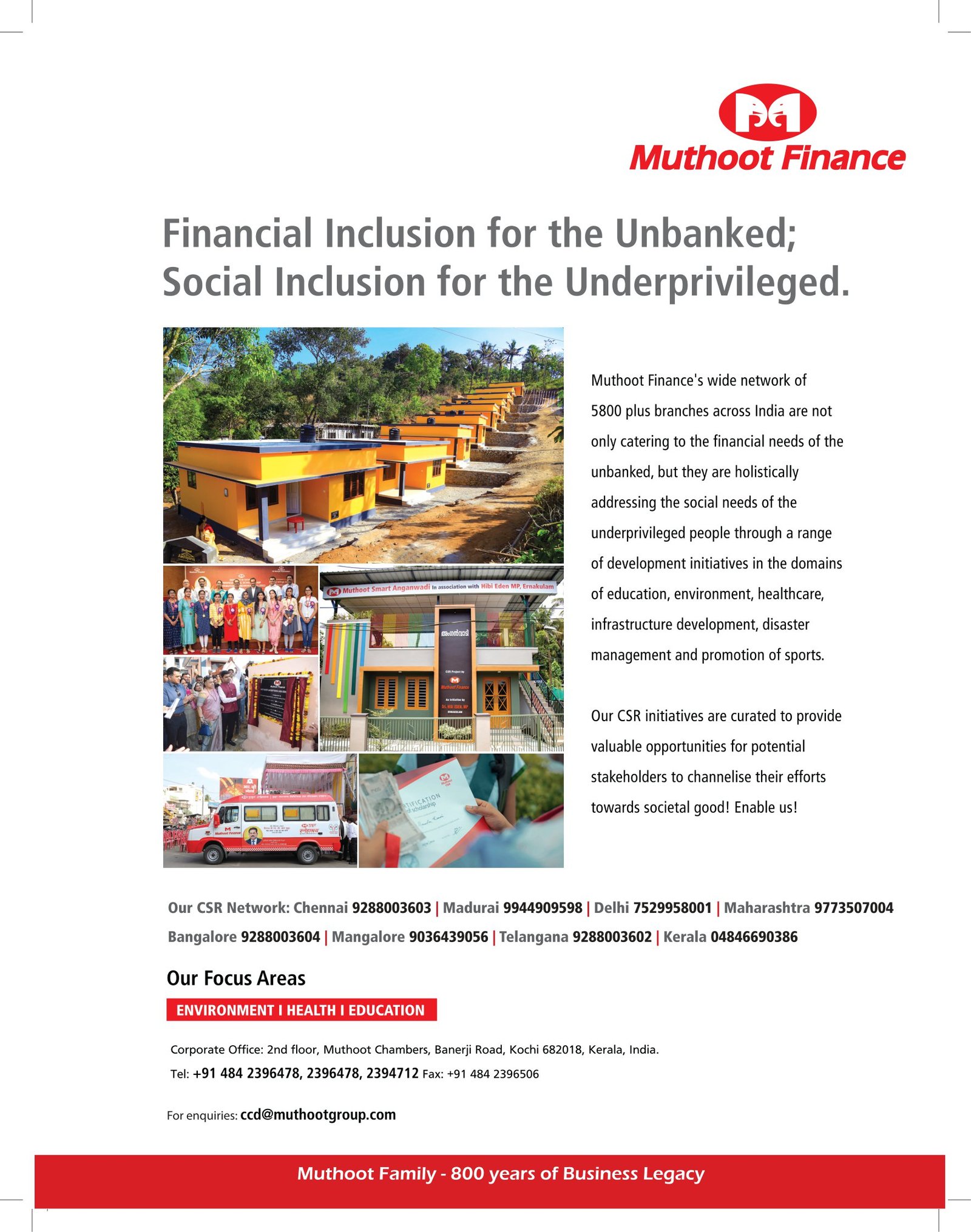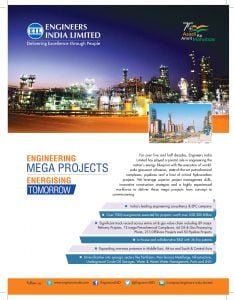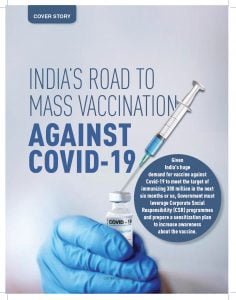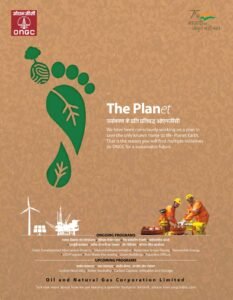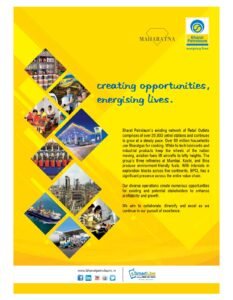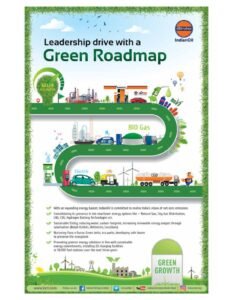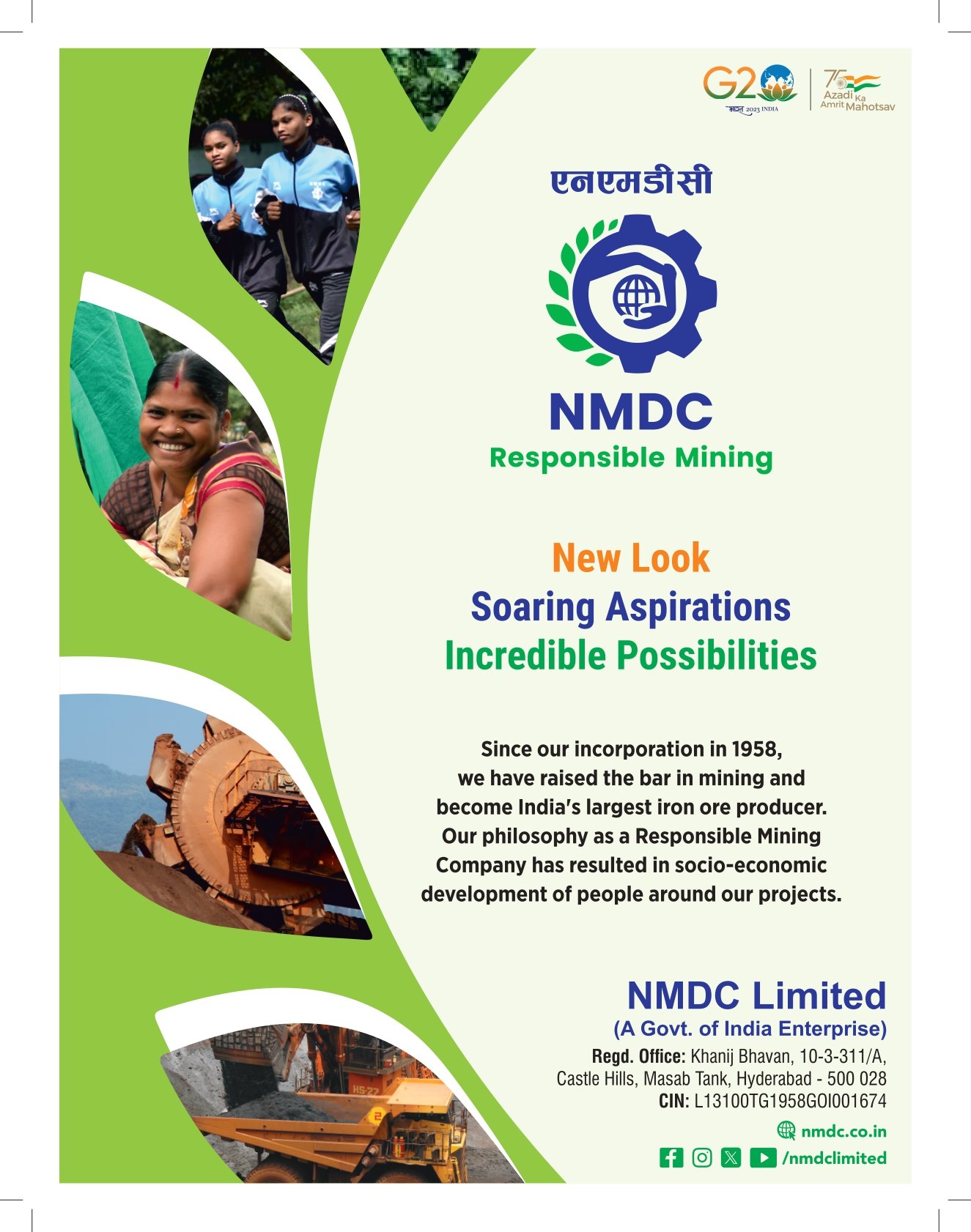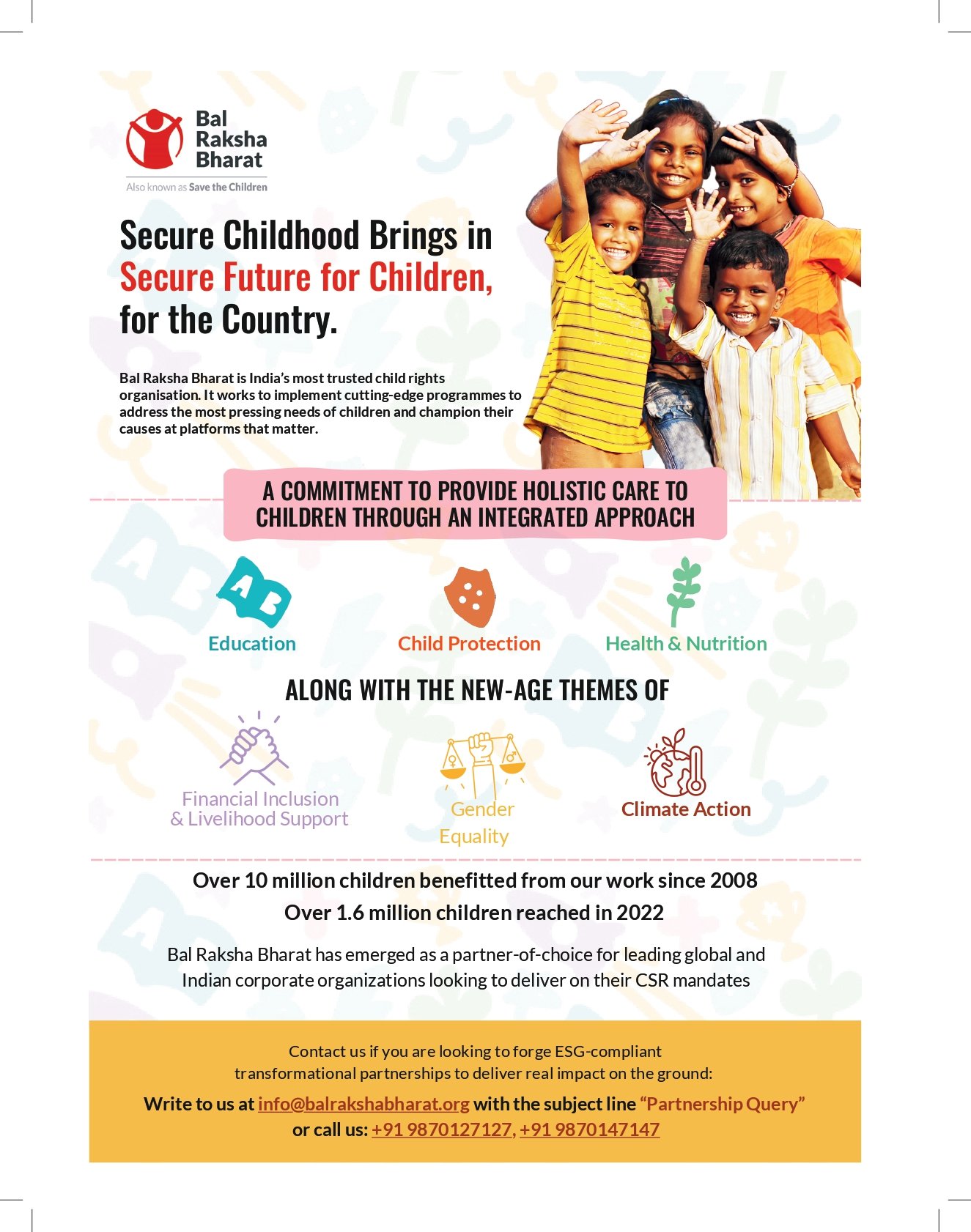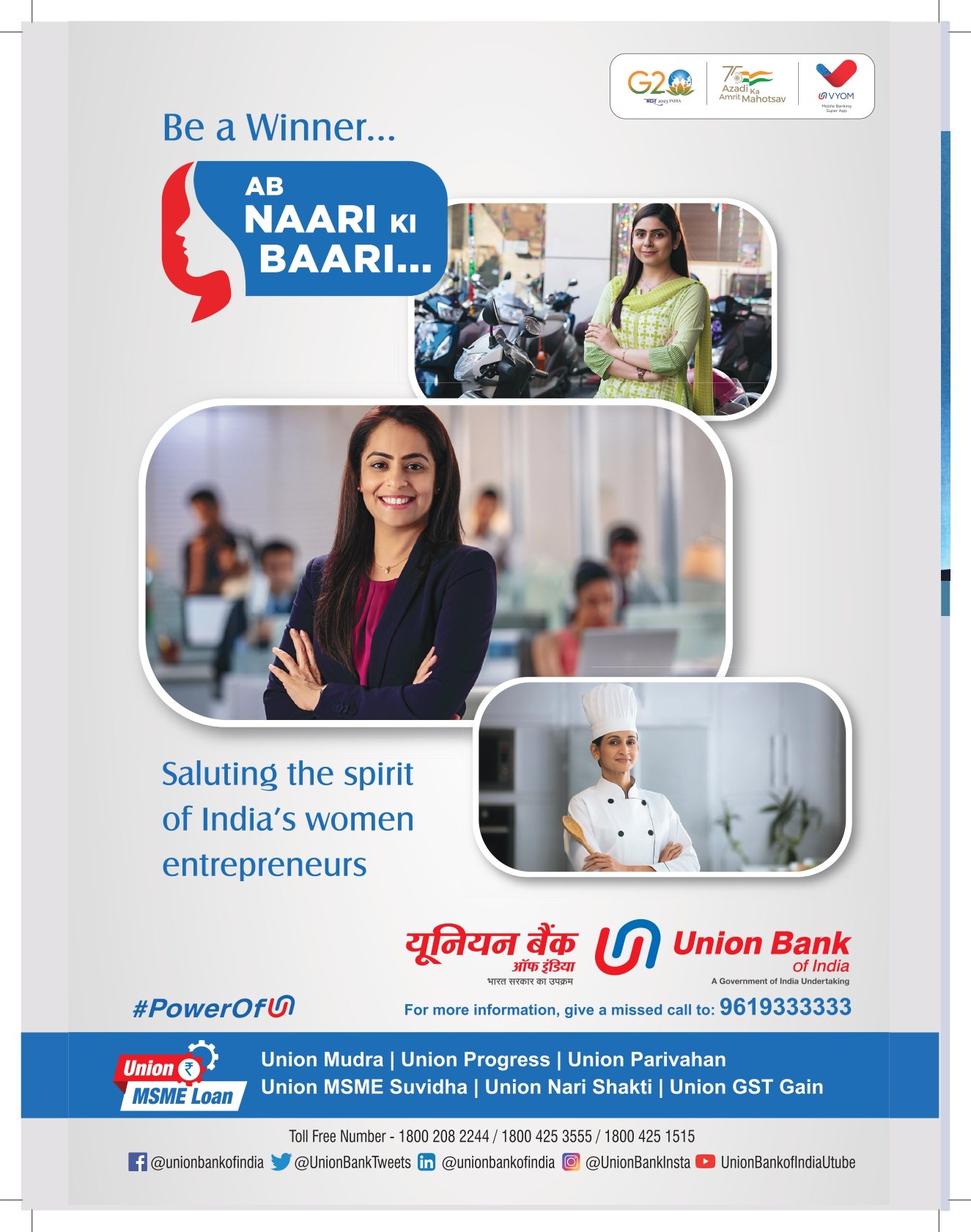CSR REPORT
CSR Spending: A Status Report
A total of `8,314.08 crore of CSR funds remained unspent during the 2014-15, 2015-16 and 2016-17 financial years while some of the leading business houses spent more amount than they are mandatorily required to do.
Since the Companies Act was amended in 2013 paving the way for the emergence of the idea of Corporate Social Responsibility (CSR) in structural sense, there have been many dialogues and debates. Earlier, CSR was discussed only in board meetings of both public and private companies but now the discourses are in the public domain. Now corporates hire professional executives to manage their CSR spends on specific mandate of their choice. The budgets of the corporates are going northwards year after year truly reflecting the profits of the companies. The role of CSR executives has also expanded and they are a constantly growing tribe. They organize seminars, symposiums, power-point presentations to ideate, initiate and find new approaches to the CSR activities. The interactions keep them informed and they share ideas and challenges they encounter in real world. Under CSR amended rules, the profitable companies are required to spend two per cent of their three-year annual average net profits towards CSR activities in the financial year.
Some of the leading business houses in public and private sectors have spent more amount than they are mandatorily required to do. For example in fiscal 2017- 18, Reliance Industries became the top spender amongst the top 10 performers to spend more than its prescribed CSR budget. Other companies which have joined this league include HDFC Bank Limited, Wipro Limited, Tata Steel, National Thermal Power Corporation (NTPC), Indian Oil Corporation and Oil and Natural Gas Corporation (ONGC). According to the CSR Outlook Report 2018, which provides an in-depth analysis of CSR spends of big 359 companies, the corporate India’s social responsibility graph shot up with 49 per cent jump. The report visualizes a few important curves in the CSR landscape of India, entirely based on the actual CSR spending data of these companies, as reported by them in mandatory disclosures.
Ten top companies spent huge sums of their profits on CSR initiatives and the amount spent by them in 2017-18 is as follows: Reliance Industries (`760.50 crore), ONGC (`495.23 crore), Infosys (`239.54 crore), Bharat Heavy Electricals Limited (`239.11 crore), Tata Consultancy Services (`218.43 crore), ITC Limited (`215.05 crore), NTPC (`205.17 crore), National Mineral Development Corporation (`188.65 crore), Tata Steel (`171.46 crore) and ICICI (`155.54 crore).
At the India CSR Summit 2018, Anant Kumar Hegde, then Union Minister for Skill Development, had said that “CSR is today’s biggest development platform and skill development is here to stay. Skill development is one such area across all sectors for the future growth of the country”. Many corporations have been spending on providing skill-based training to the young generation which would make them entrepreneurs or employable. In his keynote address at CSR Summit 2018, Dr Satya Pal Singh, Union Minister of State for Human Resources Development, had said, “On this platform of India CSR Summit 2018, I urge the companies to make the right use of their CSR funding by choosing the right partners and help in making the weaker class sustainable.” The India CSR Outlook Report threw light on CSR spends of 359 companies. The prescribed CSR budget of these big 359 companies was `9,543.51 crore. The actual CSR spend was `8,875.93 crore.
Actual CSR compliance to prescribed CSR is 93 per cent and effective CSR compliance is 89 per cent, thus a difference of +2 per cent from last financial year. These 359 companies account for almost three-fourths of the total CSR spend in India, making it a big sample size for any such study and analysis and were short-listed on the basis of `1 crore or above prescribed CSR in FY 2017-18. CSR initiative is a unique concept which no other country is following mandatorily. Few interesting facts of the India CSR Outlook Report reveals CSR fund deposit in the Prime Minister Relief Fund has gone substantially down by 80 per cent from FY 2015-16 to FY 2017-18. Maharashtra, Karnataka and Gujarat together received over 25 per cent of India’s total CSR fund. The north-eastern states of Nagaland, Meghalaya, Mizoram and Tripura have received lowest CSR funding so far.
Public sector enterprises account for over one-fourth of India’s total CSR spend which comes to `2,419 crore. Oil, refinery and petrochemicals sector companies command almost one-fourth of the CSR funds of India which is `2,092 crore, while the lowest is healthcare and pharmaceuticals with a CSR compliance of just `294 crore. CSR funding in education and skill development areas have increased by 50 per cent from FY 2015-16 to FY 2017-18 which comes to `3,121 crore. More than one-third of the CSR spend is on education and skill development projects while over one-fourth of the CSR spend is on water, sanitation and hygiene (WASH) and healthcare projects which is `2,385 crore.
Critics of CSR policy point out that the CSR spending is lopsided. CSR budgets of companies allow the more developed states receive more funding as the headquarters of these companies are located in the developed states such as Maharashtra, Delhi, Chennai, etc. while the more deserving states such as the North-eastern states like Tripura, Nagaland, Meghalaya and Manipur, get small amounts. In FY 2017-18, the 10 Indian states which were on CSR radar from the point of annual spends are as follows: Maharashtra `1,445 crore, Tamil Nadu `539 crore, Andhra Pradesh `414 crore, Karnataka `403 crore, Gujarat `313 crore, Rajasthan `299 crore, Odisha `252 crore, Delhi `237 crore, West Bengal `194 crore and Haryana `187 crore.
Impact of CSR Spends
To assess the impact of CSR spends is not how much to spend, but what to spend on. From healthcare to nutrition, from education to vocational training; there are so many things that can be done for uplifting the lives of the marginalized. It is very tough to make a choice. The recent report about the CSR spends of various corporates reveals that one of the biggest issues was how to allocate the spending on the different proposals that were made. Given the sheer scale of economic and social deprivation that is prevalent in India, getting the best impact for every rupee spent is not a privilege, but rather a need. A company that is setting up a primary school, for instance, will need to look beyond the monetary impact of how money will be used in raising the educational standards within the community. It will also need to consider the long-term impact an education centre will have on the area, in terms of livelihood and business. In short, the social return on investment (SROI) evaluates the social impact of an activity and helps various stakeholders and beneficiaries understand its scope and challenges. SROI is also a business tool, which a company can use as a comparison matrix, while making investments and to create additional value in existing projects.
The benefits accrued from an SROI analysis can be multi-fold. The tool can help arrive at decisions, formulate strategies and also communicate the impact. Typically, SROI analysis throws up a ratio of benefit to cost; for instance, a ratio of 100:1 implies that for every `1 spent, a social value of `100 is created. Let’s consider the case of the Mid-Day Meal Scheme that was launched by the government in 1995. Over the past two decades, the government initiative has become the biggest food programme in the world, feeding some 120 million children across India on a daily basis. The current total annual public expenditure on the scheme is about `14,000 crore, around `5 per child/per meal.
There is a direct correlation that can be drawn between the impact of the scheme and that of literacy, i.e. a reduction in the number of students dropping out. Yet, there are other social factors that also provide an indication of how the scheme has helped India fare better on the Sustainable Development Goals (SDG) such as reducing child malnutrition. The good thing about SROI analysis is that it is denoted in fiscal terms and is stakeholder-specific. The social return for each stakeholder is calculated separately, thereby discarding any sort of overlaps. For instance, there are many non-profit organizations (NGOs) like Akshaya Patra and Annamrita which are working as part of the Mid-Day Meal Scheme, and SROI can provide an idea of the impact of these NGOs, and the value they add to the movement.
Also, SROI can be calculated for future projects as well as the ones that have concluded. Hence, even if a project has been evaluated without a SROI analysis, its impact can still be measured on the same scale. SROI can also be an interesting tool to help companies plan and evaluate their CSR spends. It encourages transparency and accountability throughout the process. Many companies in India are already using it. With CSR spends in the country set to cross `50,000 crore by 2019, tools like SROI can play a pertinent role in measuring the impact of these activities and ensuring that the money spent on social projects creates social value. As spending reaches meaningful proportions, there is a need to improve the quality and the impact of all that spending on the ground.
CSR spend at five per cent of the total money set aside for CSR needs to be relooked as firms have singled this out as a factor holding them back from enhancing their own in-house CSR capacities. Implementation entails multiple costs such as salaries of dedicated CSR staff, administrative overheads, establishment expenses, communication expenses, professional fees, statutory filing and related consultancy, etc., which are difficult to keep within the five per cent limit. There is also a case for ensuring robust due diligence before appointing an NGO/ voluntary organization partner. Governance and impact achieved are two areas which need assessment. An independent third-party evaluation like grading of the NGOs/implementing agencies should be considered to gauge a potential partner’s ability to drive the desired social impact. As per a Crisil report, an additional `2,380 crore would have been spent last fiscal had all the listed companies spent the stipulated two per cent of profit. The total unspent amount is `60,000 crore over the last four years. The report also flagged the possibility of a shrinkage in spends due to the recent amendments, under which a CSR would now be based on financials of the immediately preceding financial year rather than the earlier stipulation of any of the three preceding financial years.
Education and skill development, followed by healthcare and sanitation topped the areas where the spending had taken place, while national heritage protection and promotion of sports emerged as two areas with faster growth. Nearly half of the spending companies based on the registered offices were from Maharashtra, followed by the National Capital Region of Delhi. As per data provided by the then Corporate Affairs Minister Arun Jaitley to the Rajya Sabha, the total unspent CSR funds stood at `8,314.08 crore during the three financial years — 2014-15, 2015-16 and 2016-17. In 2014-15, the prescribed CSR amount was `15,251.32 crore but `5,185.39 crore remained unspent. In 2015-16, the figure was `15,256.20 crore whereas `889.91 crore was not spend, the data showed. In 2016-17, the prescribed amount was `15,705 crore, while `2,238.78 crore remained unspent.
There is an urgent need to evaluate the progress being done under CSR – funding aspect, underspent allocated money, impact of the initiatives on the sectors and imbalanced spending on developed states rather than those where the need for CSR activities are required to be enforced diligently.





